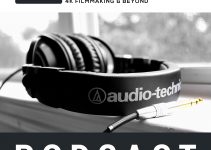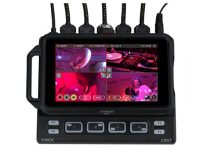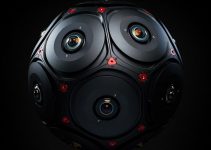While cinema cameras have shrunk in size dramatically over the past five or so years, their menu options have only grown. Raw formats, compression, and autofocus are among the tough choices in newer video cameras and it can be difficult to sort through and find what’s best. Blackmagic Design is among the companies who has tons of features in their tiny Pocket Cinema Camera 6K and you might be looking for some recommended settings.
Filmmaker Matteo Bertoli has just shared his favorite settings for the BMPCC 6K. This includes things like ISO, codecs, resolution, and more, but Bertoli also talks about his setup. Anyone looking to learn how to get their Blackmagic camera configured can learn from how others pick settings.
Kicking things off with the Record tab, you’ll find some of the most important settings. Bertoli sticks with Blackmagic RAW and chooses to stick with constant bitrate for more reliable file sizes and predictable performance.
Most of his personal work he actually sticks with 12:1 compression and been very happy. For client work he does go up to 8:1 or even 5:1 to squeeze out a tad more quality. There is a big jump to go from 12:1 to 8:1, so it’s worth it for client work.
As for resolution, Bertoli picks the top 6K options. Either full 6K or the 6K 2.4:1 is fine depending on your personal preference. For slow motion, you will need to drop down to 2.8K 17:9. Going back to 6K, it helps save some space by going to 2.4:1 if you can get away with the crop.
The next Record page offers more detailed options, such as Dynamic Range. Film is Blackmagic’s take on log recording. He goes with 23.98p for frame rate with an off-speed frame rate of 48 fps. The off-speed matters since you can get there via shortcut by tapping the fps in the top left corner of the screen.
You’ll also choose the media on this page, either CFast, external drive, or fullest card. Bertoli uses an external drive – which many recommend for the Pocket 6K – and actually turns on the stop recording if card drops frame option. This is a safer indication when you have issues with your recording.
More Record settings include a timelapse function, detail sharpening being set to off, and an option to bake a LUT into the file. Faster turnarounds might want to apply the LUT, but generally speaking you won’t use this.
Moving on to the Monitor tab you’ll find a lot of stuff that comes down to personal preference. You’ll choose what to display, whether it is meters or codec and resolution, turn on/off status text, and a few more things.
At the top are options for the camera’s LCD, the HDMI feed, or both. By tapping one, you can then pick whether to turn on LUTs, zebras, focus assist, frame guide, false color, and more. Bertoli has the LUT, Focus Assist, Frame Guide, and Grid for LCD and HDMI. For both, he has opacity at 50%, colored lines for focus assist, red peaking, and a few other things.
Audio isn’t anything special. Basically, the default stereo recording built into the camera. The setup has a few settings. You have an option for shutter speed or shutter angle, which is again down to preference, and an option for 50 Hz and 60 Hz system speed for flicker-free shooting depending on the country you are in.
The next page is where you can program your Function buttons. This is going to be a very helpful screen. Bertoli has F1 set to False Color, F2 as Display LUT, and F3 is the Focus Assist. Another option for toggle is that you can set whether to display on the LCD, over HDMI, or both.
The next page shows off things like the tally light, hardware ID, and a few other miscellaneous. Moving on you’ll find Bluetooth connection, and then the final page has a few reset options. The Pixel Remapping is of particular use as it lets you have the camera intelligently remap the sensor to account for the occasional hot pixel. Can save you a lot of headache if you notice it in your footage and run this remapping.
Presets is what you would expect. You can save your settings and then export them. You can also import if you want to move from one camera to another. And finally the LUTS tab. Find all the LUTs you’ve installed and have on the camera.
Getting out of the main menu and to the shooting screen you’ll find all your shooting settings. In the top left you’ll find the grids and other tools and be able to activate or deactivate the shooting assists. Next is frame rate.
Clicking this gives you a shortcut to your off-speed rate. After that is shutter speed/angle. Often this is a set to 180 degrees and forget about it, but occasionally you might want to tweak this to account for flickering. It can also affect the image a little as a faster shutter speed/angle will give a sharper more video look.
ISO is an important setting as it’ll impact the overall noise and grain of your image. Now, it’s raw, so there is some flexibility in post, but as a dual ISO camera you have to be careful to what side of the fence you are on. The base is 400 and the high sensitivity base is 3200. This means you likely want to avoid going below 400 in bright light. As always, pick the lowest you can.
Again, shooting raw gives a good deal of flexibility, but you should still set your white balance. Getting it in the ballpark is helpful in getting a good preview of your image. It’s a good habit to get into and is more important if you shoot ProRes on occasion as it will be baked in.
If you swipe from left to right on the screen you can find a somewhat hidden menu. Here are the Clips and Project tabs. In clips you can set reel, scene, take, and slating info as well as lens data.
This can help keep your files a bit more organized. Project goes a little further with project name, camera labeling, and some other quick options.
Phew. That was a lot. It’ll definitely help to get a handle on the settings for yourself, but this is certainly a good starting place. Any settings you are very particular about with your Blackmagic cameras?
[source: Matteo Bertoli]
Order Links:
Disclaimer: As an Amazon Associate partner and participant in B&H and Adorama Affiliate programmes, we earn a small comission from each purchase made through the affiliate links listed above at no additional cost to you.




